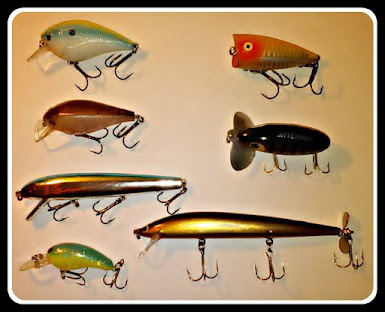Fishing a new body of water is both exciting and daunting at the same time. The prospect of lots of bass, especially big bass, tends to get most anglers blood flowing. On the other hand, the challenge of determining the parts of the lake and types of cover/structure holding those bass can sometimes be a little unnerving!
Here are several steps you can take both before and once on the water to prepare for a great day of "catching bass" on any new body of water.
Before the hitting the water:
Research the lake or pond: Look for information about the waterbody, such as its size, depth, and structure. Also, research the type(s) of bass that are present in the lake or pond you'll be fishing.
Study a map of the lake or pond: Look for features such as drop-offs, flats, creek channels, bluff areas, inflow/outflow areas, points, roadways & road beds, dams, docks, and weed beds. These are likely spots where bass will be found at different times of the season or varying weather conditions.
Look for local fishing reports: Many fishing websites, magazines, local newspapers and tackle shops have reports on the fishing conditions, including hot areas of the lake/pond and the lures, baits, and techniques that have been working well.
Scout the lake or pond: Before you start fishing, take a few minutes to scout the lake or pond. Look for signs of fish activity, such as jumping fish, feeding birds, and schools of baitfish. Also be aware of fish and wildlife activity around you while on the water.
Pack the right gear: Make sure you have the right gear, such as fishing rods, reels, lures, and baits, for areas of the waterbody and types of cover you expect to encounter.
Plan to fish at the right time of day. Though bass are usually most active in the early morning and late evening, research best fishing times for the days of your fishing trip and plan your time on the water accordingly.
Once on the water:
Use the right gear. Make sure you have the right rod, reel, and line for the size and type of bass you are targeting; baits you'll be using and types of cover/structure you'll be exploring.
Experiment with different lures. Bass can be caught with a variety of lures, including jigs including chatterbaits, various types of soft plastics, topwaters, crankbaits, and spinnerbaits. Try different lures at different fishing spots until you find what the bass prefer in that section of the lake at that time of day.
Fish the edges. Bass often hang out near the edges of weed beds, lily pads, docks, shade lines, laydowns, and other types of cover. Casting your lure close to and working the lure along these edges can increase your chances of catching fish.
Pay attention to the weather. Bass are affected by changes in water temperature, barometric pressure, and weather patterns. Pay attention to the forecast as well as sudden changes when on the water and adjust your fishing strategy accordingly.
As always research and follow local fishing regulations as well as rules applying to the lake or pond you are fishing.
Once off the water:
Keep a fishing journal. Recording the time of day, weather conditions, lures used, type of cover fished, and location of where you caught the fish can help you to figure out the best spots and techniques to use on future trips to this lake and offer a starting point for similar water bodies.
Bass fishing is a great way to enjoy the outdoors and the thrill of catching a big fish. By following these tips, you can increase your chances of success on a new lake. Remember to always be patient, pay attention to your surroundings, and most importantly, have fun!


No comments:
Post a Comment